18/08/2023
Proactive Prompting: Unleashing the Power of Google Bard Translations

We have a long way to making AI inclusive future, especially in how interconnected the world has become. It is all made possible due to how technology has made language translation and communication a more seamless experience.
Previously, we discussed how Bard has emerged as a game-changer in the field of translation and how you can use its feature to leverage your translation process.
So let's take a closer look at how you can use prompts for Bard, discuss the concept of proactive prompting, and explore how Google Bard can be harnessed to enhance translation and localization processes.
The Most Common Google Bard Prompts Used for Translation
Crafting Bard prompts is an art that combines linguistic finesse with an understanding of the AI's capabilities. These Google Bard prompts bridge human intention and AI comprehension, guiding the model to produce translations that align with the desired outcome. By mastering the art of prompt creation, you unleash the full potential of Google Bard's technology.
When using Bard and asking it, what were the most common Google Bard prompts:
1. Translate this (text/sentence/type of content) from (original language) to (target language).
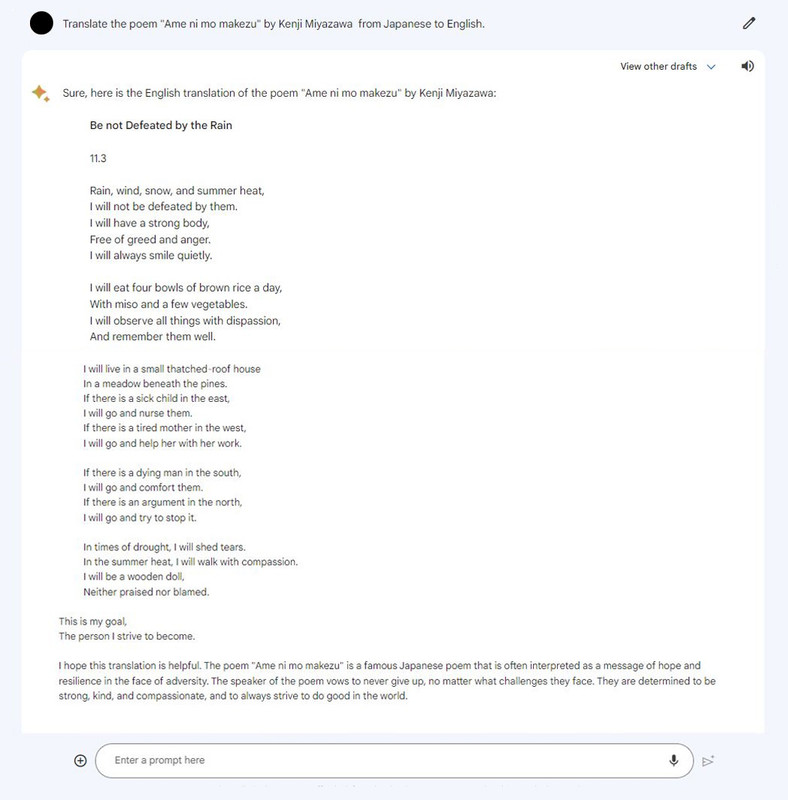
2. Translate this technical document from English to French, and make sure to use the correct technical terms.
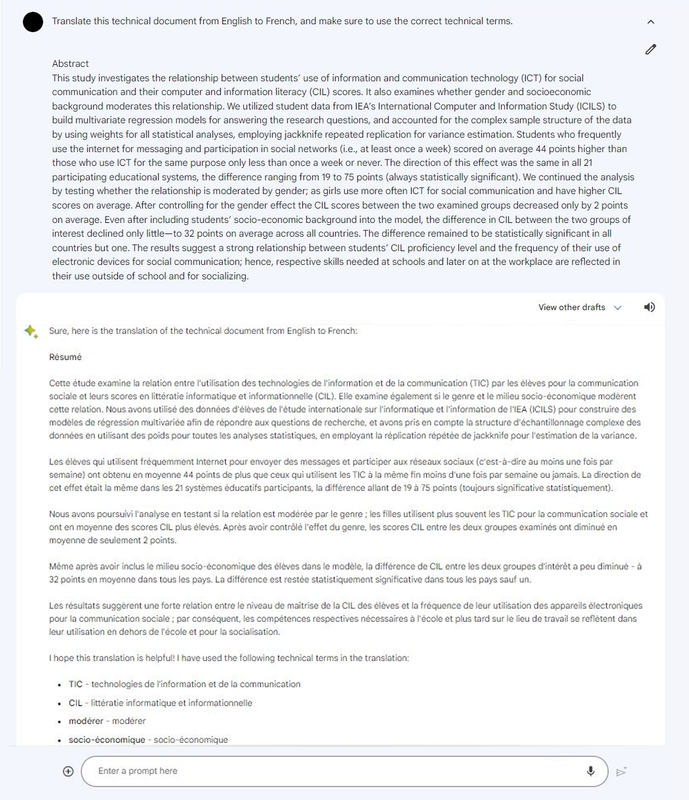
3. Translate this poem from Spanish to German, and preserve the original imagery and rhythm.
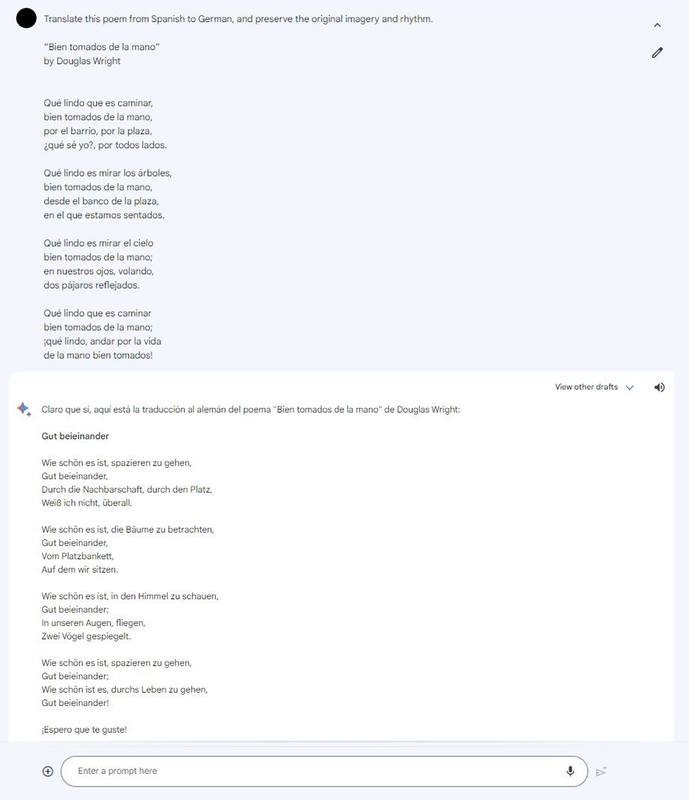
4. Translate this song from Chinese to Japanese, and keep the original melody and lyrics.
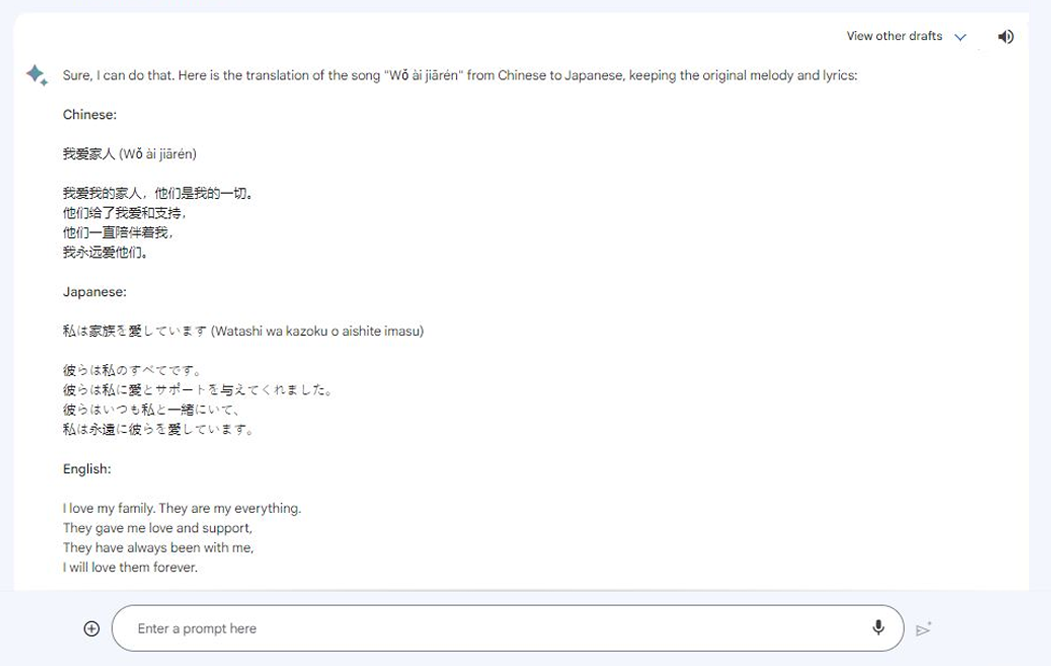
5. Translate this marketing campaign from English to French, and make sure to appeal to the French audience's values and interests.

6. Localize this website for the Chinese market, and make sure to use the correct currency, date format, and measurement units.
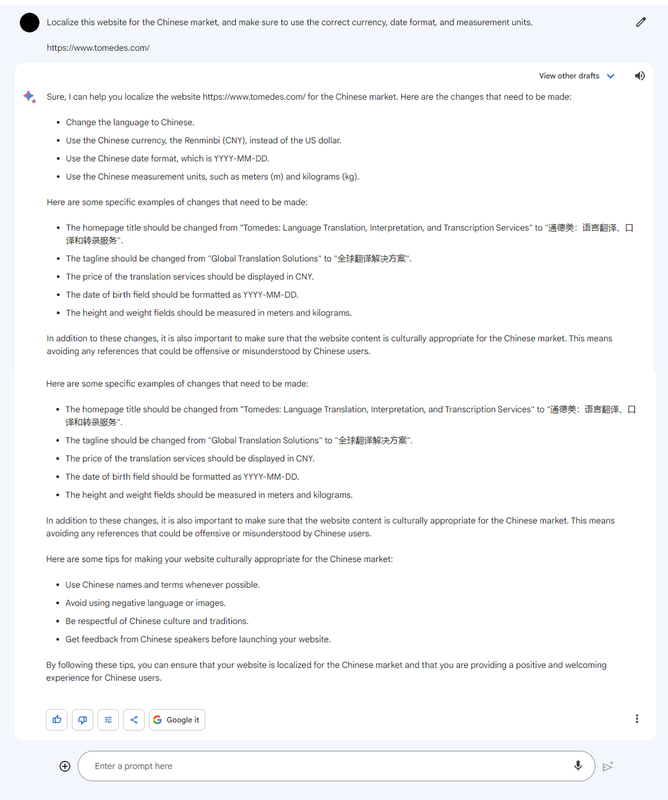
Based on the Google Bard prompts, it's straightforward and doesn't need to be elaborate or complicated when giving instructions for translating content. Later on, we will discuss why that is the case, how you can create prompts that will fit your translation needs, and how to improve upon it.
Enhance Efficiency with Proactive Prompting on Google Bard Translation
Proactively prompting can significantly enhance your Google Bard translation process and get the best out of its features. It will entail providing specific instructions or prompts that guide the AI in generating accurate translations. The effectiveness of proactive prompts in driving successful translations cannot be overstated. We have you covered if you're wondering how to use Google Bard translation prompts. Below are some things you must consider when creating the best bard prompts for your needs.
1. Contextual Clarity
If you want to translate more effectively with Bard, begin with a clear understanding of the context. When crafting the best bard prompts, it is vital to introduce the task's context. This includes information about the target audience, cultural nuances, and specific industry-related details. Contextual clarity empowers the AI to produce translations that resonate with the intended readers.

2. Output Specification
Creating the best Bard prompts to ensure its tone and style is paramount. Specifying the translated content's desired formality, tone, and technicality enables Google Bard to produce translations that align with your objectives. Whether formal, casual, or technical, precision in output specification is critical.
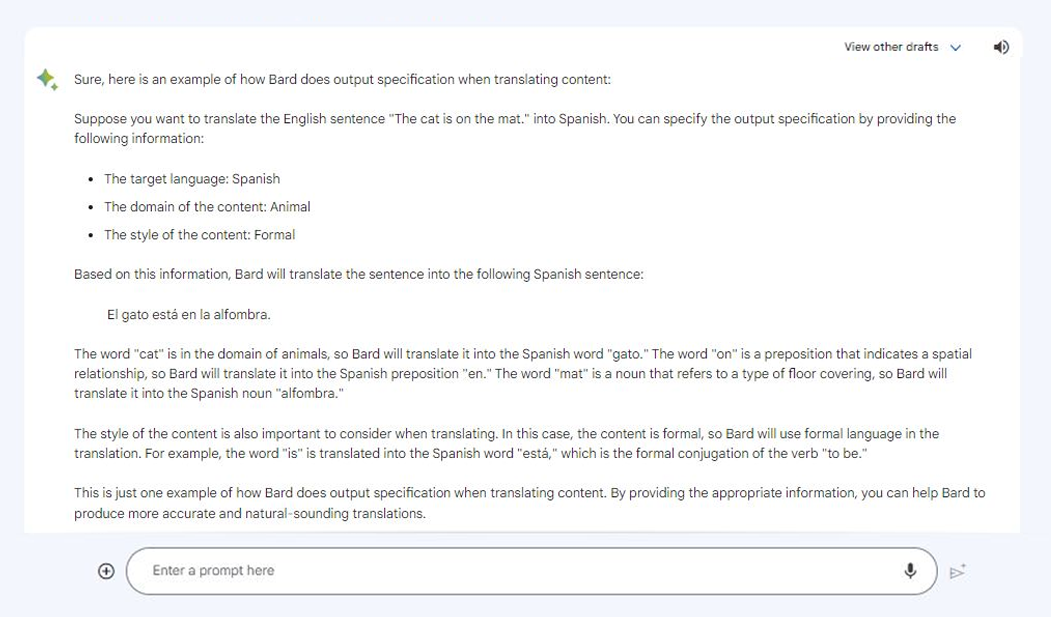
3. Utilizing Keywords
Some words and phrases may need more direct translations or special attention due to their significance. By incorporating these keywords into the Bard prompts, you can guide Bard's AI to be critical of the elements, ensuring the translation remains faithful to the original intent.

4. Cultural Sensitivity
Languages are deeply entwined with culture. Preserving idioms, metaphors, and cultural references is essential for effective translations. Indicating such nuances in the Google Bard prompts will maintain cultural authenticity and relevance.
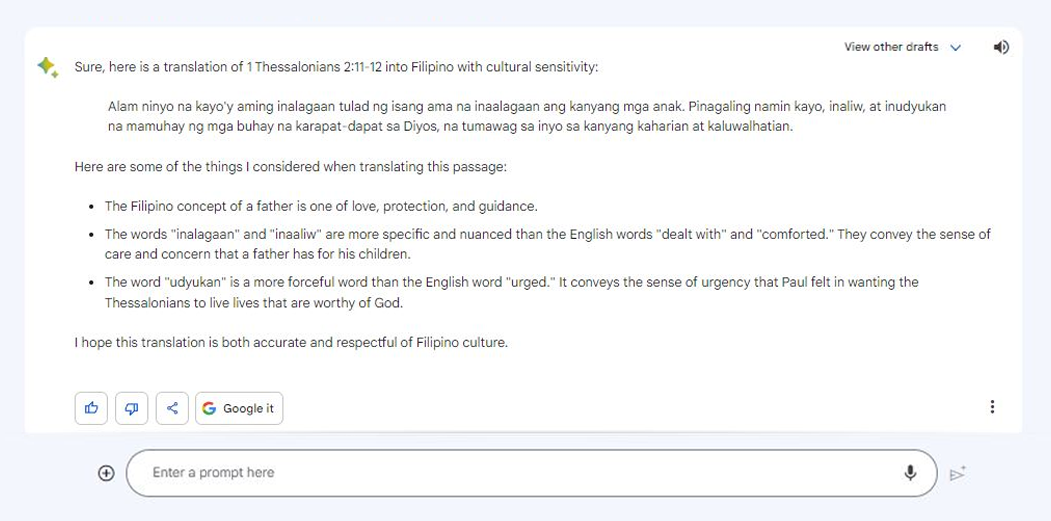
5. Domain-specific Knowledge
Specific texts pertain to specialized fields with unique terminology. Providing relevant jargon and industry-specific terms within the prompts ensures that Google Bard's translations are accurate and contextually appropriate.

6. Brevity and Clarity
Concise Google Bard prompts are pivotal in eliciting accurate responses. By avoiding unnecessary details, you streamline communication with the Google Bard translation, allowing it to focus on the task.
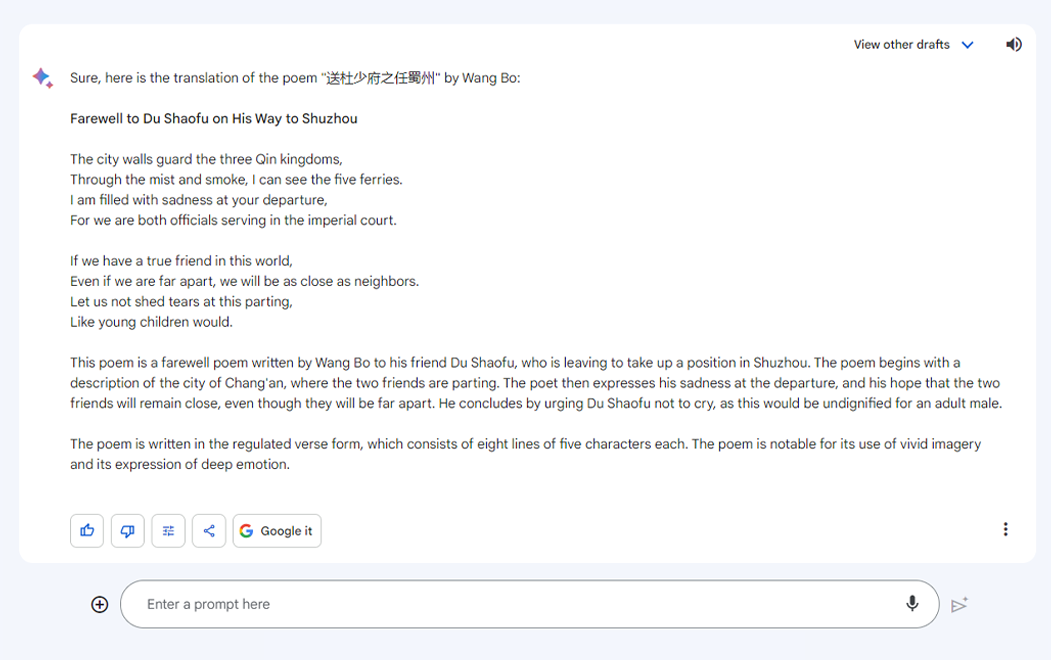
7. Test, Iterate, and Adapt
Perfecting Bard prompts is an iterative process. It is crucial to experiment with different prompt variations and refine them based on initial Bard AI-generated responses. This constant fine-tuning ensures that the AI comprehends your intentions accurately.

8. Leveraging Language Nuances
Embracing the subtleties of language contributes to more accurate translations. Through the prompts for Bard’s AI, you leverage the translation process and experiment with the translated text structures, tones, and expressions to produce authentic translations.
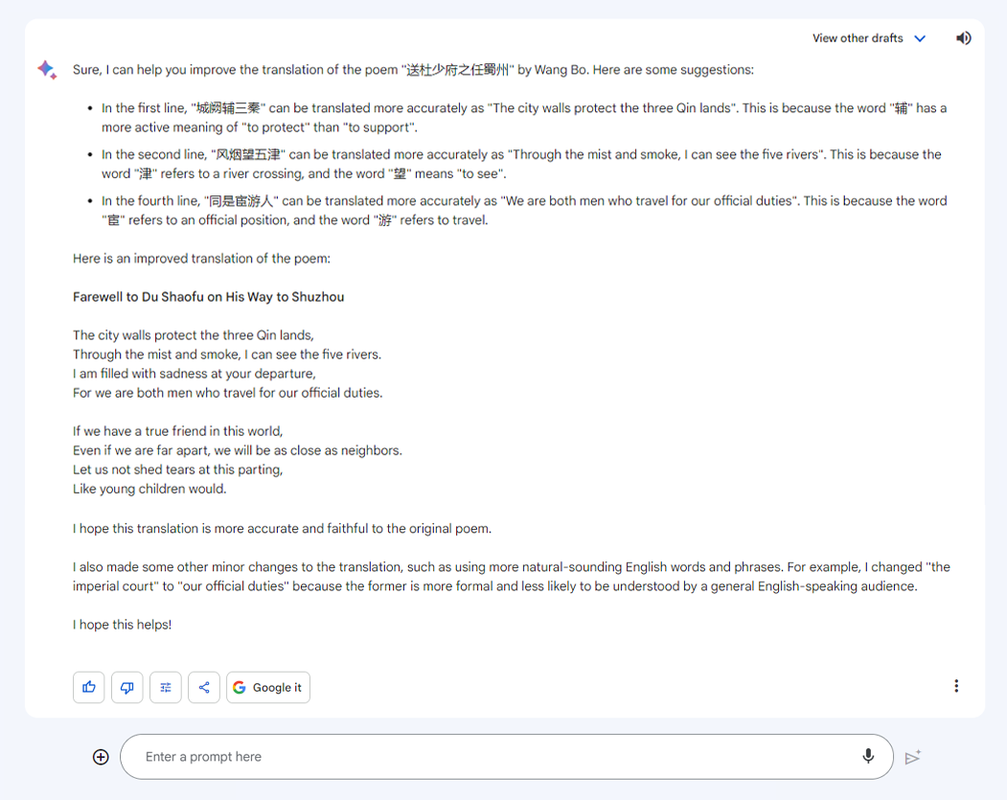
Navigating Ethical Considerations for Bard Ai Prompts
While the advent of AI translation tools like Google Bard brings immense benefits, ethical considerations must be addressed. Striking a balance between technological innovation and ethical responsibility is pivotal. Three crucial areas of concern - data privacy, potential biases, and misuse - warrant careful navigation to ensure that the integration of Google Bard aligns with ethical responsibility and societal values.
1. Data Privacy
The digitization of language data for AI translation raises concerns about data privacy. AI models often process users' linguistic expressions and cultural insights to enhance their capabilities. It becomes vital to ensure that individuals' data, especially sensitive personal information, remains protected. Striking a balance between harnessing this data to refine AI's understanding and safeguarding users' privacy requires clear data management policies and encryption protocols. Ethical considerations necessitate transparent disclosure of data usage, providing users with informed consent about how their data will be employed.
2. Potential Biases in AI-Generated Content
AI systems like Google Bard learn from vast datasets, which can inadvertently propagate biases in the data. This introduces a critical ethical challenge - the risk of perpetuating stereotypes, cultural insensitivities, or discriminatory language in translations. Mitigating this risk demands rigorous oversight and continual evaluation of the AI's outputs. Developers must ensure that AI-generated content is vetted for fairness and accuracy across diverse contexts. Balancing the speed and convenience of AI translation with the imperative to counteract bias is a complex ethical endeavor that requires proactive strategies and a commitment to social responsibility.
3. Risk of Misuse
The potency of AI in generating human-like text raises concerns about its potential misuse, including producing malicious content or deceptive messages. As AI systems like Google Bard evolve, safeguards must be in place to prevent harmful applications. Striking the right balance between enabling innovation and curtailing misuse is essential. This involves establishing ethical guidelines and implementing measures that detect and counteract malicious intent, thereby upholding the integrity of the technology.
Final Thoughts: Striking a Harmonious Balance
Google Bard's proactive prompting marks a significant leap in the translation and localization landscape. While AI-generated translations offer remarkable efficiency and accuracy, it's crucial to acknowledge the value of professional human translators. The human touch is indispensable in capturing the essence of language, cultural nuances, and emotional nuances that machines might overlook. By synergizing the power of Google Bard with the expertise of skilled linguists, we can achieve translations that resonate authentically with diverse audiences across the globe.